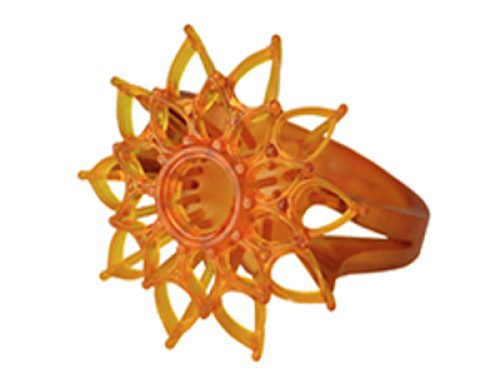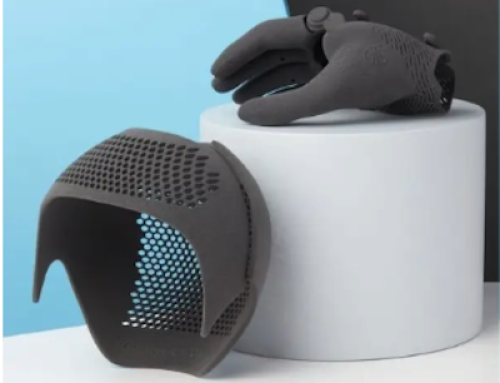Reprint from www.additivemanufacturing
Adding an FDM 3D printer enabled a producer of subassemblies for aircraft to bypass traditional tooling solutions on many custom tools and bring much of this work in-house. Cimquest customer, CPI Aerostructures was in a good position in 2013. After years as a small business providing subassemblies almost exclusively for military aircraft, the company was experiencing a massive growth spurt. Sparked by an influx of both commercial and military work, the company had grown from about 20 employees to nearly 300 in just a few years, and recently moved across the street from its original facility to a larger 171,000-square-foot space on New York’s Long Island.
But CPI’s ability to meet its custom tooling needs hadn’t kept pace with this growth. The company’s niche is assembly, work that requires jigs, fixtures, check gages and other custom items. Because CPI does not produce discrete parts, its in-house machining capacity is limited to a small tooling department operating manual equipment. Historically, all custom tooling was made by this department or farmed out to local machine shops.
Faced with ever-increasing demand for custom tooling on the assembly floor, the company had to make a choice: A) Continue to outsource this machining work, adding cost and lead time to projects; B) Add machining equipment and personnel to the tooling department, increasing capacity but also adding overhead; or C) Find another solution.
In the end, CPI chose option C: It added a fused-deposition modeling (FDM) 3D printer. Taking this route gave CPI the added capacity to bypass the traditional tooling department on many tools, bringing more of its tooling work in-house, and reducing the time and cost of creating custom tooling.
Sparked by Growth
Producing subassemblies for aircraft has been CPI Aerostructures’ specialty since the company was founded in 1980. Typically working as a subcontractor, CPI sources discrete parts from its global supply chain, fashions them into subassemblies, polishes and paints the assemblies as needed, and ships the finished pieces to the customer or main contractor.
Whereas many of its peers are vertically integrated—offering machining, metal forming and fabricating, assembly, and finishing services—CPI focuses almost entirely on assembly. For years, all of the custom tooling required for this work had to be farmed out to local machine shops.
“Basically, we were doing things the same way they’d been done since World War II,” says Clint Allnach, director of manufacturing operations. “We’d model the jigs and fixtures then send the design to external shops. Those shops would have to procure the material, machine it and deliver it. Typical lead time was anywhere from 12 to 14 weeks for a modest-sized tool and could cost several thousand dollars to $25,000 or more.”
The addition of an in-house tooling department in 2012 helped alleviate some of the company’s tooling needs as it grew. This department relies on manual equipment, including Bridgeport mills, lathes and welding equipment to manufacture and maintain metallic tools such as custom jigs, fixtures and gages. But by 2013 the maintenance and care of the hundreds of tools needed on the assembly floor became overwhelming, and CPI reached a point where another solution was necessary.
With our help, CPI purchased and installed a Fortus 360mc 3D printer. The FDM system offers a build envelope measuring 14 by 10 by 10 inches (355 by 254 by 254 mm) and enables CPI to print with both polycarbonate and nylon material.
Bringing the printer into the engineering department has dramatically reduced cost and turnaround time for custom tooling. In many cases, tooling can be printed in-house much more cheaply, usually for about 25 percent of the cost of outsourcing it to be machined. 3D printing is also much faster; by batching parts and running the printer overnight, CPI can have a complete tool in-hand in less than a week.
“What we transitioned to was still doing the modeling and design in-house, but short-circuiting the entire offload procedure and just batching all our design models to the printer,” says Allnach.
Looped into the Process
CPI is now able to print custom tooling, check gages, fixtures and other items for use on the assembly floor with FDM at a fraction of the cost of having them machined out of house. The printer has become so engrained in the company’s workflow that 3D-printed tooling is considered for every new job that comes in, and is often turned to as the solution for problems that arise.
Rewiring for Additive
It wasn’t easy to get to this point, Allnach notes. At first, the engineering department’s inclination was to design parts, often solid, as if they were to be machined. Integrating standard hardware such as bushings and pins into the plastic tooling was also a challenge, and there were problems with cracking in the beginning. Fixing these problems required thinking differently about tooling destined for 3D printing.
“Additive manufacturing thinking is the inverse of subtractive,” says Allnach. “With machining, the more material you remove, the more expensive the part becomes. But with additive, you gain value by leaving out as much material as possible.”
With training that we provided to them and ongoing trial and error, the company has learned to use the technology effectively and has even established a set of 3D-printing design guidelines. These guidelines address issues ranging from selecting the ideal print orientation to managing bed space. Having this set of rules and suggestions helps streamline the design process and improve the rate of printing success.
Given the positive impact that CPI has seen over the past few years, the company is now ready to upgrade its 3D printer. Working again with Cimquest, CPI has found a buyer for its Fortus 360mc and made plans to purchase a used 400 model. This new machine will offer an expanded build size and also add the capability to print in Ultem, which will further extend the lifespan of custom tooling. It’s even possible that the company would one day use this capacity to print structural parts for aircraft, but that’s still a long way off.
3D printing capability is not necessarily something the company markets to its customers, but those who know about it see its value, says Allnach. “We can now help with prototyping work, and it makes us much more flexible in terms of accommodating changes to designs,” he says. The 3D printer is also a “risk mitigator.” It allows CPI employees to be creative in coming up with solutions, and customers have more confidence in CPI’s overall process knowing that tooling can be easily iterated to accommodate design changes.












Leave A Comment